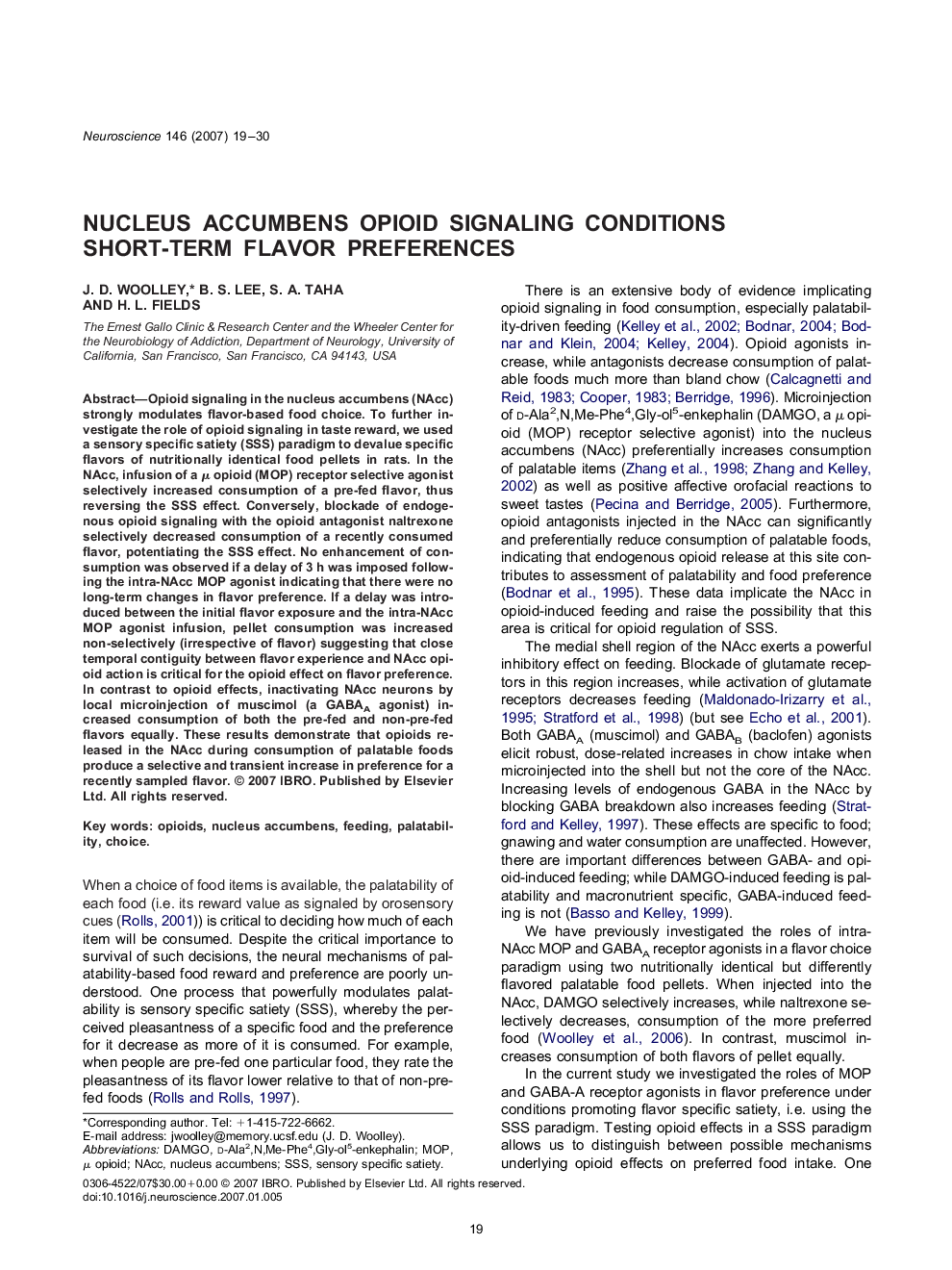| کد مقاله | کد نشریه | سال انتشار | مقاله انگلیسی | نسخه تمام متن |
|---|---|---|---|---|
| 4340967 | 1295818 | 2007 | 12 صفحه PDF | دانلود رایگان |

Opioid signaling in the nucleus accumbens (NAcc) strongly modulates flavor-based food choice. To further investigate the role of opioid signaling in taste reward, we used a sensory specific satiety (SSS) paradigm to devalue specific flavors of nutritionally identical food pellets in rats. In the NAcc, infusion of a μ opioid (MOP) receptor selective agonist selectively increased consumption of a pre-fed flavor, thus reversing the SSS effect. Conversely, blockade of endogenous opioid signaling with the opioid antagonist naltrexone selectively decreased consumption of a recently consumed flavor, potentiating the SSS effect. No enhancement of consumption was observed if a delay of 3 h was imposed following the intra-NAcc MOP agonist indicating that there were no long-term changes in flavor preference. If a delay was introduced between the initial flavor exposure and the intra-NAcc MOP agonist infusion, pellet consumption was increased non-selectively (irrespective of flavor) suggesting that close temporal contiguity between flavor experience and NAcc opioid action is critical for the opioid effect on flavor preference. In contrast to opioid effects, inactivating NAcc neurons by local microinjection of muscimol (a GABAA agonist) increased consumption of both the pre-fed and non-pre-fed flavors equally. These results demonstrate that opioids released in the NAcc during consumption of palatable foods produce a selective and transient increase in preference for a recently sampled flavor.
Journal: Neuroscience - Volume 146, Issue 1, 25 April 2007, Pages 19–30